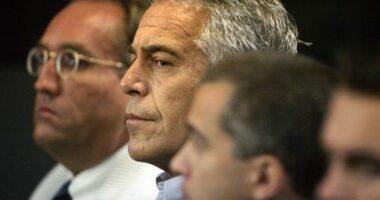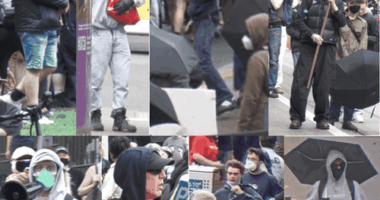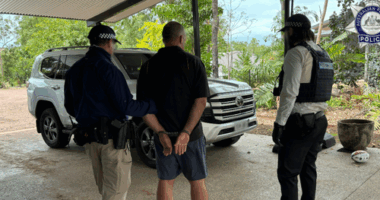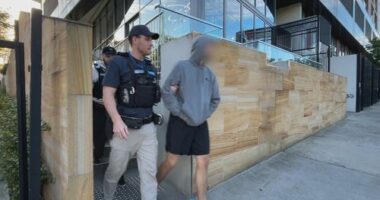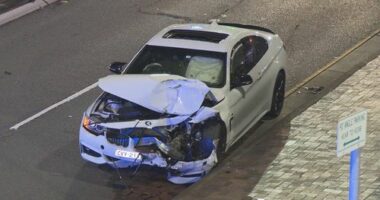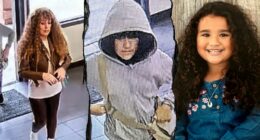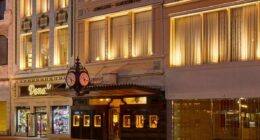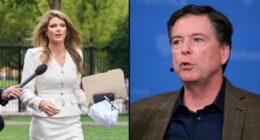Share this @internewscast.com
He answers matter-of-factly: “It was about, you know, a weird guy that collects serial killer artifacts and stuff like that.”

Michael Usry Source: Supplied
Usry will later find out the film’s plot shares eerie similarities with the case the police are investigating, but right now, in this cramped, airless room, he’s scrambling to work out what his interrogators want and why it feels like the walls are closing in on him.
“Tell us what’s going on,” demands one of the detectives.
Tell us what happened, and put yourself in a position because it’s coming. The train’s coming down the track.
How this information was sold to Ancestry.com and then obtained by police raises questions about data privacy, informed consent and policing that still plagues the DNA industry today.
Mormons, Salt Lake City and the ‘elusive billionaire’
Neither did I, until an investigation that forms the basis of the podcast Secrets We Keep: Should I Spit into how our genetic data is being used by police in Australia, led me to Usry and unravelling his story.

The Ancestry.com DNA Today database contains the genetic information of 25 million people. Source: Getty / Bloomberg/George Frey
I wanted to know more about the connection between Usry’s dad’s DNA donation, the Mormon Church and Ancestry.com. So I travelled to Salt Lake City, Utah, the global centre of history and worship for members of The Church of Jesus Christ of Latter-day Saints — also known as the Mormon Church.
“You have a lot of very loyal, very believing people that pursue genealogy and they have the belief that they are helping their extended family and their ancestors receive the ‘word of God’ and thus receive salvation,” Usry explains.
They can be very zealous about this research … and it’s strictly a religious cause too.
Then, in the nineties, came advances in DNA science and technology that meant immutable, biological data could be used to identify a person and their family.
Sorenson made a phone call to Woodward that would lead to a multi-billion dollar business and have the unintended consequence of landing Michael Usry in a police interrogation room decades later.
A family tree of the world
“He was doing so many avant-garde things with DNA at that time. He just had a vision that was really unprecedented.”

Dr Scott Woodward examines a mummy at the Egyptian museum in San Jose, California, in 1995. He became known as the ‘Indiana Jones of DNA’. Source: Getty / Michael Macor/The San Francisco Chronicle
One night, Woodward invited his lab students out for dinner to announce that he’d received a phone call from a philanthropist — Sorenson — who would fund him and his team to build a DNA database of unprecedented size and scope, correlating genetic and genealogical data from living people from all across the globe. It would be a family tree of the world.
“We certainly understood that it was possible because carried inside all of our cells is a record of who we are and how it is that we’re related to everyone on the planet. But none of the science has been invented yet, none of the computational biology to crunch billions of pieces of data and turn it into something that is interpretable and useful. None of that has been invented,” Ekins says.
It was like being at the beginning of the internet.
“Here I am, you know, accused [of murder]. My life has been altered because of this. And I hate to think that that’s because of the Mormon Church and what they allowed people to do.”

The Mormon Salt Lake Temple in Salt Lake City, Utah. More than 30 million people globally have done a family history DNA test, but few realise this multi-billion dollar industry’s origins trace back to the Mormon church. Source: Getty
Word of Sorenson’s collection spread, and soon enough, DNA samples were coming in from nearby countries in Latin America, the United Kingdom, and far-flung places like the Pacific Islands, Australia and New Zealand, where the collection hit a snag.
“I feel like one person trying to get, you know, to squeeze an answer out of a gigantic corporation,” he says.
‘It was scary stuff’
“We can laugh at that, but really our idea and our thoughts were that if we can take two people and sit them down at a table and not just tell them that they’re related to each other in some, you know, mystical way out there, but actually show them their pieces of DNA that they share from a common ancestor, that they will think differently about each other,” he says.

The late James LeVoy Sorenson (left) pictured in 2004. Dubbed ‘the elusive billionaire’, he built dozens of companies in his lifetime, spanning industries from real estate to biotechnology. Source: Getty / Business Wire
With a passion for discovery, Woodward also sought to push science forward as far as possible, and his relationship with Sorenson provided him with the means to do so.
“It was scary stuff. This was a whole new idea. Ancestry was concerned about the ethics.”
“The amount that they were charging for their DNA test and the data that they were giving back, they were losing money on every one of those [tests] that they were doing.
But their hope was that they could then interest those people that were coming in, in a subscription to their other services, and so they could bring maybe 2.5 million people into ancestry through DNA.
Its ethnicity prediction tests are a major selling point for Ancestry but Woodward is keen to point out there are no DNA markers for ethnicity. What these tests actually reveal is where your family lived in the world at a certain point in time, and the results are based on information already in the database as a reference. That is why many customers of DNA kits will see their ethnicity percentages change over time.
‘Real interesting’: DNA’s unintended applications
Representatives from federal and state agencies have told me that the way they are using DNA now is evolving from simply matching a sample from a crime scene to a profile held in a criminal database, to intelligence-driven applications for investigators, such as generating leads before the start of an investigation.

For Mormons, a ceremony known as the baptism for the dead unites families across time, for eternity and drives the church and its members’ interest in genealogy. Source: Getty / Alacatr
DNA is now also being used to reveal things like eye colour, height, biogeographic ancestry and facial features to investigators, and yet no laws have needed to change to allow police to implement what they call these “advanced DNA capabilities” and search methods.

